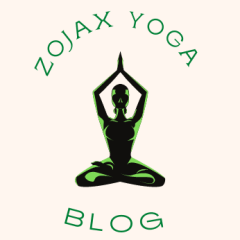Basics of Strength Development
Our mobility and, by extension, our entire existence, depend on our motor and functional abilities.Additionally, whereas functional abilities determine the energy source and ways to collect energy, motor abilities determine how an activity will be executed (or whether it will be performed at all!).
Every movement, whether it is walking, running, jumping, overcoming obstacles and external resistance, or manipulating different objects, requires a certain level of strength, speed, coordination, and flexibility on the part of the executor.If all motor skills are interconnected and even depend on each other, it can rightly be said that for movement, sport, or any type of physical activity, strength, or its derivative, strength, is the dominant motor skill.
Strength is the fundamental motor capacity that allows a person to produce their maximum of muscle force.Strength is the capacity to produce the greatest amount of muscle force in the shortest amount of time.As a result, power is the result of strength and speed and is employed to overcome numerous barriers.In real life, this implies that two people can have same strength yet distinct strength.Numerous things affect strength as an ability.
The innateness coefficient for strength is between 0.5 and 0.6, which indicates that between 50 and 60 percent of it is influenced by genetics. Although a relatively high percentage, it leaves us with a significant 40–50% room for development through targeted, planned, and programmed exercise, as well as nutrition, which will directly affect other factors that affect strength (synthesis of muscle proteins, hormonal status, in addition to genetics, the factors on which strength depends can be divided into two groups: the first is made up of factors related to the characteristics of the motor task being performed, i.e., the activity, and the second is made up of factors related to the individual characteristics of the person performing that task.tc.).
The first group includes mechanical response and type of load, time limitation and manifestation of force, body position, speed, and direction of movement. Individual characteristics on which strength depends are muscle size and type of muscle fibers, body mass, nutrition, and hormonal status, but also intro- and inter-muscular coordination.
And when we add to all this the fact that strength is divided into different types—repetitive, explosive, maximal, relative, absolute, general, specific—we see that the approach to developing strength can be different.
Yoga for Strength
When it comes to yoga, that is, the practice of performing yogic positions (asanas), it is an activity that includes concentric and eccentric, as well as isometric muscle contractions, and that enables the development of dynamic, static, repetitive, and relative strength, depending on the type and method of the asana. The following is an example of asanas that are useful for developing the aforementioned types of strength.
Plank pose – Kumbakasana (and variants)
The leading asana for strength and stability It is comprehensive because it requires static stabilization activation of almost the entire body, especially the muscles of the front of the trunk, i.e., the abdomen, and then the back, leg muscles (quadriceps and gluteus), muscles around the shoulder blade, pectoralis major, and triceps.

Image by yanalya on Freepik
Holding the plank is already demanding enough on its own, but you can do various dynamic movements in it, for example, separating the opposite arm and leg from the floor, lowering into a plank on your forearms and rising from it, or lowering into a yogic push-up (caturanga dandasana). In order to include the muscles of all sides of the body, it is preferable to do other plank variants: side plank (Vasisthasana) and back plank (Putvorttanasana).

Image by Freepik
High lunge pose – Alanasana
Certainly one of the most useful asanas for a modern man who sits a lot is this one because it activates and strengthens the leg muscles, especially the quadriceps and glutes, and stretches the groin on the back leg, along with the torso (back and abdominal muscles) and arms.

Image by yanalya on Freepik
As a result of the smaller base of support on the feet, it also poses a modest obstacle for balance.Dynamic strength can be developed in this position by bending and extending the front or back knee.
Warrior 3 – Virabhadrasana 3
Also one of the ideal asanas for the modern man is this yoga pose, which balancing and stimulating the muscles which are weak in the sedentary population (back, glutes, lower trapezius, etc.).

Image by yanalya on Freepik
A good strength and balance exercise is repetition of transitions from high lunge to warrior 3 and back for the lower body or changing the position of the arms inside warrior 3 (next to the body, out to the side, or forward) for the upper body’s strength.
Boat pose – Navasana
This yoga pose is for stabilizing the trunk and strengthening the abdominal muscles, the iliopsoas, and the quadriceps. To activate the oblique abdominal muscles, it is possible to join the palms above the knees and rotate the upper part of the body left and right while maintaining a stable position of the pelvis and legs.

Image by yanalya on Freepik
You can work on maintaining a stable position with repetitions of bending and extending the knees, and for additional strength, you can lengthen the lever of the upper part of the body so that the arms are raised and extended parallel to the ears.
Grasshopper pose – Salabhasana
This position activates the contralateral posterior stabilizers of the trunk, pelvis, and shoulder blades. It strengthens muscles that are on average weak in modern men, especially the gluteus maximus, lower trapezius, and thoracic extensors.

Image by yanalya on Freepik
Activating the abdomen in this position, along with lowering the diaphragm (inhalation) when entering the position, will increase the intra-abdominal pressure and additionally stabilize the lumbar part of the spine in front.
Small Bridge pose – Setu Bandha Sarvangasana
The position that activates the trunk stabilizers, particularly the back sides; it is ideal for strengthening the gluteus maximus muscle and also activates the quadriceps; on the arms, it activates the rear deltoideus, latissimus dorsi, and triceps.

Photo by Nikola Murniece on Unsplash
For additional strengthening of the gluteus, it is possible to do repetitions of raising and lowering the pelvis, and for an even greater challenge, it is possible to do all of the above with one leg stretched vertically upwards, toes toward the ceiling.



